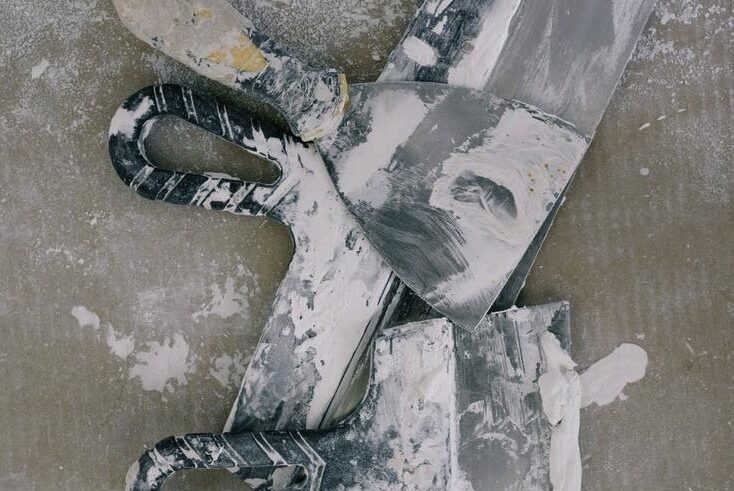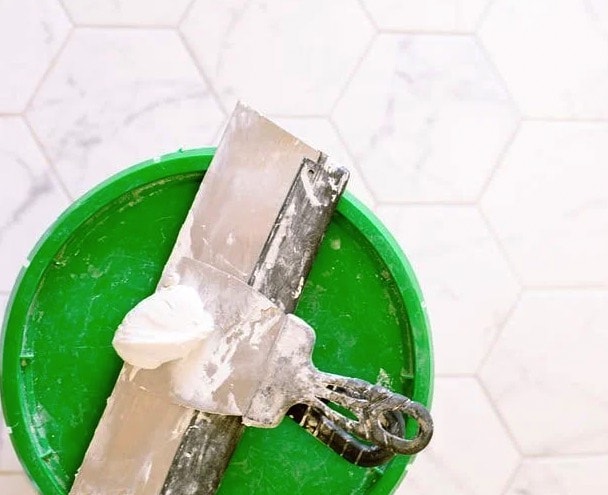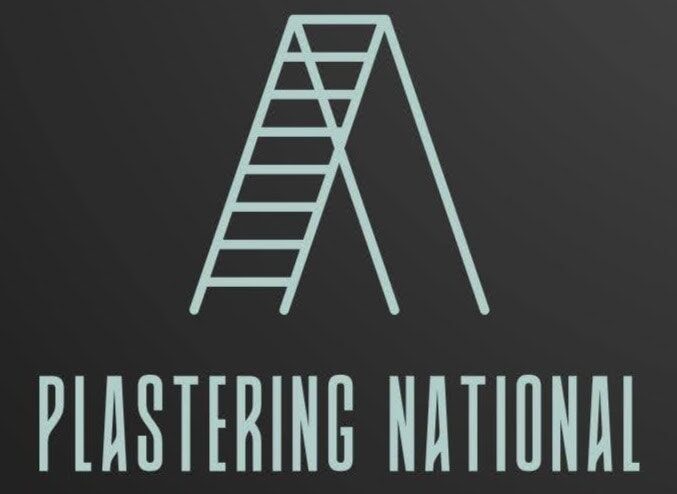The removal of plaster is a time-consuming, unpleasant task that calls for little expertise. Lath, or very thin strips of wood, are concealed below the wall covering. Lath is attached to the studs in the wall and provides support for the plaster. The lath can be left in place after the plaster has been removed.
There are numerous situations in which it is advisable to remove plaster, and the process can be done in many ways. First, the growing humidity may have caused efflorescence to form on the plaster, reducing its strength.
The drywall boards are fairly secure because the lath is holding them up. If you need to run wires, instal pipes, or put in insulation in a wall cavity, you’ll need to take down the lath first.
The crumbling plaster could have been brought on by mechanical pressures. Plaster that isn’t securely adhered to the bricks should be scraped away as well.
Plaster can be broken up and removed using a hammer and sickle, but it’s a time-consuming and back-breaking process. Machines such as hammer drills and chisel hammers are two more options.
It is advised that the room be completely sealed by sealing the door, possibly with a zip door, before the plaster is removed. Before beginning this activity, it is imperative that the correct personal protection equipment (PPE) be worn, including sturdy shoes, goggles, earplugs, gloves, and a face mask. Have a complete ensemble as well, even if it’s secondhand or disposable.
These, however, are not compatible with an extraction system, and they generate a great deal of dust and debris. It is recommended that you engage a renovation miller to remove the plaster and the coarse fillers.

What Methods Exist for Removing Plaster?
Plaster walls are still very common in older structures, even if they are less common now than they were during the drywall boom of the 1950s. There may be a need to repair or replace electrical wiring, insulation, or cracked plaster, depending on the extent of the settling. In any case, plaster removal is simple with the right tools and enough of time.
The time and effort required to remove plaster from a wall or ceiling during a renovation project is often a major deterrent to the project’s timely completion. The walls of many homes, especially older ones, are finished with plaster. The task at hand is simple, but it will be a dirty one to complete.
If your home is historically significant, you should consider repairing the plaster instead of demolishing it. Changing out the plaster in an older home with drywall is a major upgrade that must be permitted just like any other work.
Plaster is commonly used to finish the walls of older homes and buildings. The walls become weak, uneven, and unsightly as plaster deteriorates with time and use.
Painting over the existing plaster won’t work. Remove the old plaster and replace it with drywall or another suitable wall covering before trying any repairs.
How Difficult Is It to Take Down Plaster?
Taking down a plaster wall requires no special training or expertise. Yet, there are tools and helpful recommendations that you should be aware of that will prove effective:
- Easier
- Don’t be the one to start a fuss.
- SafersQuicker
Please be careful
Put on a face mask, earplugs, and protective eyewear before you begin removing the plaster. Because of the possibility of flying plaster, you should wear protection gear.
Prerequisite Equipment
Common household tools will suffice for removing lath and plaster from walls and ceilings.
- Hammers and mallets are used to strike the bolster, a big chisel-like tool.
- Cleaning a carpeted room requires more than just a vacuum, dustpan, and brush; you’ll also need a carpet cleaner.
- Cloth for use as a carpet on the floor (old bedsheets, thin plastic sheets or membrane)
- Personal Protective Equipment (PPE), such as a high-quality dust mask, gloves, earplugs, and safety glasses Masking Stools or Ladders, for taping the sheets in place
- An industrial spatula with a hefty blade (for scraping the walls clean afterwards; an old one is OK).
- A waste container, the size of which is decided by the amount of plaster to be dumped and its thickness (we discovered plaster that was an inch thick in some locations!).
For the removal of old fixtures, you might also need dust sheets, debris sacks, and electrical screwdrivers.
Get Ready to Tear Down Some Drywall
Before beginning, make sure you have adequate time or people to help you complete the tasks. Plaster removal and cleanup is a laborious process that calls for a significant investment of time and energy. Having a group of people to help you out is ideal if you’re not particularly physically active.
You need to clear the room of all its contents and store its contents somewhere before you can start preparing the area. Putting the heaviest items in the centre and covering them with a tarp or old sheet to protect them from flying things is a good idea if there’s room.
In addition to removing light fixtures and electrical plates, you should also remove any hooks, shelves, or TV mounts that are still attached to the wall.
Complete Last-Minute Preparations Before Launching
Once you’ve completed tape everything off, you can prepare your tools (see the list at the top of the page). However, tools aren’t the only factor. To successfully lock yourself inside by taping all the doors shut, you will need to do/have the following:
- A sealed container for drinking on the go (to get rid of the dust from your mouth occasionally)
- Although dust masks can help, you will still need tissues because you will be blowing your nose and sneezing regularly.
- Assure that the entire work area is within the reach of the drill’s extension cable and SDS bit (if using one).
- This process concludes with a trip to the bathroom.
Be Sure to Inspect the Walls
Remove the plaster carefully and check the walls for pipes and cables. In order to prevent any damage to these items throughout the removal procedure, it is important to know exactly where they are. Turning off the room’s electricity at the main fuse box is also a good idea to prevent any mishaps involving live wires.
The lights must be turned off
Hidden dangers abound in older buildings, such as exposed wiring and appliances without junction boxes. I discovered some wire as I tore down a wall. Be sure to use a non-contact voltage tester on all outlets and switches before beginning demolition by turning off the power at the breaker box.
Get Rid of the Plaster
It’s tempting to rush in and use a sledgehammer even if it doesn’t seem like the right instrument for the job; nevertheless, if you care about the stability of the building, you should use prudence and a lighter touch.
Look for the Bolts
If you have a hammer handy, you can tap on the wall to locate the studs, which are the vertical wooden beams. Then, use the hammer to break the loose plaster that isn’t supported by studs. If you’re having trouble hearing studs, you can get a wall scanner to help you locate them.
Remove the Drywall/Plaster
Use a shovel to remove the broken plaster. Although some plaster may stick to the lath, it should be stripped away to expose the wood. Make sure the lath stays undamaged throughout the process. Taking off the lath and plaster separately will make cleaning much easier.
It’s possible that your wall is quite old because of the horsehair plaster used to cover it. However, proceed with caution, as this may cause even more rubbish and waste.
Take Away the Rest of the Plaster
Use a hammer or scraping tool to remove any plaster that has dried and hardened on the lath.
Take Off the Drywall Plaster
Plaster is added to dry wall to make it stronger and smoother. Nonetheless, removing plaster from drywall is a time-consuming chore. When removing plaster, the drywall paper is often torn. The old plaster may be easily scraped off the drywall with this procedure.
Step 1: Remove the drywall mud
The first step is to remove the loose plaster from the drywall. For this job, a drywall knife is what you need.
Step 2: Throw away any excess plaster with a utility knife.
Using a utility knife, the drywall must be sliced to remove dust and debris. The tip is sharp enough to pierce the plaster’s edge so you can grab it and pry it off.
Step 3: Remove peeling drywall paper.
Using a utility knife to cut the hanging pieces to size is recommended due to the increased danger of ripping the drywall paper during the scraping process.
Step 4: Regrout the drywall
Wallboard paper could be torn from all the scraping, therefore a utility knife will be needed to cut the hanging piece to size. applying drywall primer and joint compound to patch holes in the drywall paper.

Remove the Lath
- To locate a lath strip, look for the end of a board row that has been attached to a stud. Most laths were installed in large portions, with dozens of strips affixed to a single wall stud. For ease, you can begin peeling the strip off from its tail. If you pry off the lath from the middle of the strip, it will probably break because it is so dry and brittle.
- Try sliding the chiselled end of your crowbar or hammer under a lath strip that has been affixed to the wall. Only the end of the lath that is fastened to the wall stud needs to be pryed free; doing so will cause the rest of the lath strip to shatter. If the lath is broken, it will be more of a hassle to remove and dispose of. To begin, you should untie the lath ends of the segment.
- Use nails to move on to the next section of lath. Pry the boards loose from the studs by working at the nails holding them in place. Next, move on to the next area of lath where nails have been hammered in and pull them out. In most cases, the lath can be pulled off the studs by hand, or it will fall off once two or more of the nails have been removed.
- It’s recommended that the lath strips be piled in a neat pile with the same orientation of the strips. The strips shouldn’t be thrown into a big pile because that could cause problems. When the heap reaches a height of around a foot, it must be trashed.
- Take small, steady bites out of the lath, stacking the strips and pushing the stack out of the way as you go.
- Prepare the wall studs so that they can accept the drywall. Drywall needs to be installed on studs that are perfectly level. After the lath has been removed, inspect each wall stud to determine if there are any protruding nails that need to be pryed out or hammered into the stud.
How to Demolish Brick Walls and Scrape Off Plaster
Most walls in ancient buildings were built like way. Restoring brick walls requires taking them all the way down to the studs. Over time, brick walls become more vulnerable as they are covered in layers of old plaster. If the plaster is damaged, it must be removed before a new coating may be applied. Read on for advice on getting plaster off of brick walls.
Step 1: Tear into a plasterboard wall.
The walls need to have the crumbling, brittle plaster scraped away first. Plaster can be broken up with a hammer or chipped away with a screwdriver.
Use caution if you need to use a hammer drill here to prevent brick damage.
Step 2: Utilize a solution of hydrochloric acid
A hydrochloric acid solution will dissolve adhesive plaster. Just dab the solution onto the plaster with a clean towel and then apply it. The next step is to use a wire brush to thoroughly clean it.
Step 3:Restore the damaged wall.
Plaster needs to be scraped off a brick wall before mortar can be applied for repairs.
Eliminate the Litter
In preparation for the installation of insulation, the next step is to clean the exposed wall of any dirt or filth. Some areas of the home’s interior walls may be dirtier than others, and this variation is likely to be based on factors such as the home’s age and its structure. If your wall is very dusty or if there are areas that are difficult to access, renting a shop-vac may be easier than using a wide brush and dustpan.
Tip
If breathing in the plaster dust gets intolerable, use a spray bottle to mist water into the air. With the water droplets entrapping the dust particles, the air will be cleaner in a shorter amount of time. But don’t overdo it, or you’ll end up with a muddy messes.
Plaster and lath, if they fall, can be quite abrasive and scratch the floor. Put down some sturdy plywood to shield the floor from damage.
There could be something unexpected hiding behind the lathing and drywall. Among the artefacts you find may be the skeletons of long-dead rats. Put smelly things like dead animals and mouse nests in plastic bags. In all cases, gloves should be worn when handling dead animals.
Warning
Some plaster may have asbestos granules hidden beneath layers of lead paint. These compounds are extremely dangerous and can cause harm to the respiratory system and the nervous system. Is it feasible that your home’s plaster walls contain asbestos or lead paint? In that case, contact your neighborhood’s department of building and safety codes. To comply with state and municipal regulations, officials produce a list of companies that provide testing for and removal of harmful contaminants.
Tetanus-causing Clostridium tetani bacteria may be hiding in the rust on the lath strips’ nails. Work gloves should be used when operating the lath to prevent harm to the hands. One should obtain a tetanus vaccination if they haven’t in a while.
Will Asbestos Be Found in the Plaster?
Plaster has traditionally had fibre added to it to make it stronger and less likely to crack. Horsehair is a visible fixture on the wall. At least one major producer of plaster products used asbestos instead from the 1920s until the 1970s.
Tests are the only way to determine this with certainty. Conducting an online search will help you locate a lab that can perform the necessary analysis on your sample. Price is roughly $60, and turnaround is about a week. Contact a local building inspector for information on asbestos removal regulations if you suspect the plaster contains asbestos.
Conclusion
Plaster removal is a lengthy and uncomfortable task that requires minimal knowledge or equipment. Lath-thin wood strips-covers the wall. Wiring, plumbing, and insulation necessitate lath removal. Older buildings use plaster for wall coverings. Plaster deterioration weakens, variable sizes, and uglifies walls.
Plaster replacement with drywall requires a building permit, like any major renovation. Nose-blowing and sneezing require tissues, even with a dust mask. Turn off the room’s electricity at the main fuse box to avoid the live current. Plaster removal from drywall is tedious and wasteful. A utility knife must cut through drywall dust and debris.
Paper repair with drywall primer and joint compound. To repair brick walls, knock them down to the studs. The drywall needs level studs. Plaster, over time, weakens brick walls. So, remove plaster from brick walls underneath.
Plaster with multiple applications of lead paint may hide asbestos particles. Clostridium tetani bacteria may live on lath strip nails rust. Local building inspectors can explain asbestos removal laws. Search engines will find testing labs.
Content Summary
- The removal of plaster is a time-consuming, unpleasant task that calls for little expertise.
- Lath is attached to the studs in the wall and provides support for the plaster.
- The lath can be left in place after the plaster has been removed.
- You should engage a renovation miller to remove the plaster and the coarse fillers.
- In any case, plaster removal is simple with the right tools and enough time.
- If your home is historically significant, you should consider repairing the plaster instead of demolishing it.
- Changing out the plaster in an older home with drywall is a major upgrade that must be permitted, just like any other work.
- Plaster is commonly used to finish the walls of older homes and buildings.
- Remove the old plaster and replace it with drywall or another suitable wall covering before trying any repairs.
- Taking down a plaster wall requires no special training or expertise.
- Prerequisite Equipment Common household tools will suffice for removing lath and plaster from walls and ceilings.
- Get Ready to Tear Down Some Drywall Before beginning, ensure you have adequate time or people to help you complete the tasks.
- Plaster removal and cleanup is a laborious process that requires a significant investment of time and energy.
- In addition to removing light fixtures and electrical plates, you should also remove any hooks, shelves, or TV mounts that are still attached to the wall.
- Complete Last-Minute Preparations Before Launching Once you’ve completed, tape everything off, and you can prepare your tools (see the list at the top of the page).
- Be Sure to Inspect the Walls. Remove the plaster carefully and check the walls for pipes and cables.
- Turning off the room’s electricity at the main fuse box is also a good idea to prevent mishaps involving live wires.
- Be sure to use a non-contact voltage tester on all outlets and switches before demolishing by turning off the power at the breaker box.
- Then, use the hammer to break the loose plaster that isn’t supported by studs.
- Use a hammer or scraping tool to remove any plaster that has dried and hardened on the lath.
- When removing plaster, the drywall paper is often torn.
- Using a utility knife to cut the hanging pieces to size is recommended due to the increased danger of ripping the drywall paper during the scraping process.
- Applying drywall primer and joint compound to patch holes in the drywall paper.
- Try sliding the chiselled end of your crowbar or hammer under a lath strip affixed to the wall.
- Only the end of the lath fastened to the wall stud needs to be prayed free; doing so will cause the rest of the lath strip to shatter.
- Prepare the wall studs so that they can accept the drywall.
- Restoring brick walls requires taking them all the way down to the studs.
- A hydrochloric acid solution will dissolve adhesive plaster.
- Plaster must be scraped off a brick wall before mortar can be applied for repairs.
- In preparation for the insulation installation, the next step is cleaning the exposed wall of dirt or filth.
- If your wall is dusty or, some areas are difficult to access, renting a shop vac may be easier than using a wide brush and dustpan.
- If breathing in the plaster dust gets intolerable, use a spray bottle to mist water into the air.
- Put smelly things like dead animals and mouse nests in plastic bags.
- In all cases, gloves should be worn when handling dead animals.
- Some plaster may have asbestos granules hidden beneath layers of lead paint.
- In that case, contact your neighbourhood’s building and safety codes department.
- Work gloves should be used when operating the lath to prevent hand harm.
- One should obtain a tetanus vaccination if it has been a while since they’ve been a while.
- At least one major producer of plaster products used asbestos instead from the 1920s until the 1970s.
- Conducting an online search will help you locate a lab that can analyse your sample.
- Contact a local building inspector for information on asbestos removal regulations if you suspect the plaster contains asbestos.
Frequently Asked Questions About Removing Plaster
Is It Worth It to Remove Plaster Walls?
Plaster should not be removed and replaced by drywall, nor covered up by drywall. Covering makes spaces smaller and ruins the look of adjacent details such as mouldings and door and window casings.
How Do You Remove Plaster Cleanly?
If you’re removing plaster and lath from both sides of a wall, do this: Completely strip one side of the wall, then attack the other side from behind. Stab at the lath with a square shovel next to studs. As the lath loosens, the plaster breaks away and falls off.
Is It Hard to Remove Plaster Walls?
Removing plaster from walls is not a difficult job but is time-consuming and messy. Behind the plaster walls are narrow strips of wood called lath. The lath nailed directly to the wall studs supports the plaster wall coat. After removing the plaster, you can leave the lath in place if you wish.
What Will Dissolve Plaster?
The sodium in baking soda hooks up with sulphur in the plaster, and the carbon hooks up with the calcium in the plaster. So, to best dissolve the plaster of paris, place it in warm water with lots of baking soda.
Is Plaster a Cement?
The most common types of plaster mainly contain either gypsum, lime, or cement, but all work in a similar way. The plaster is manufactured as a dry powder mixed with water to form a stiff but workable paste immediately before it is applied to the surface.

